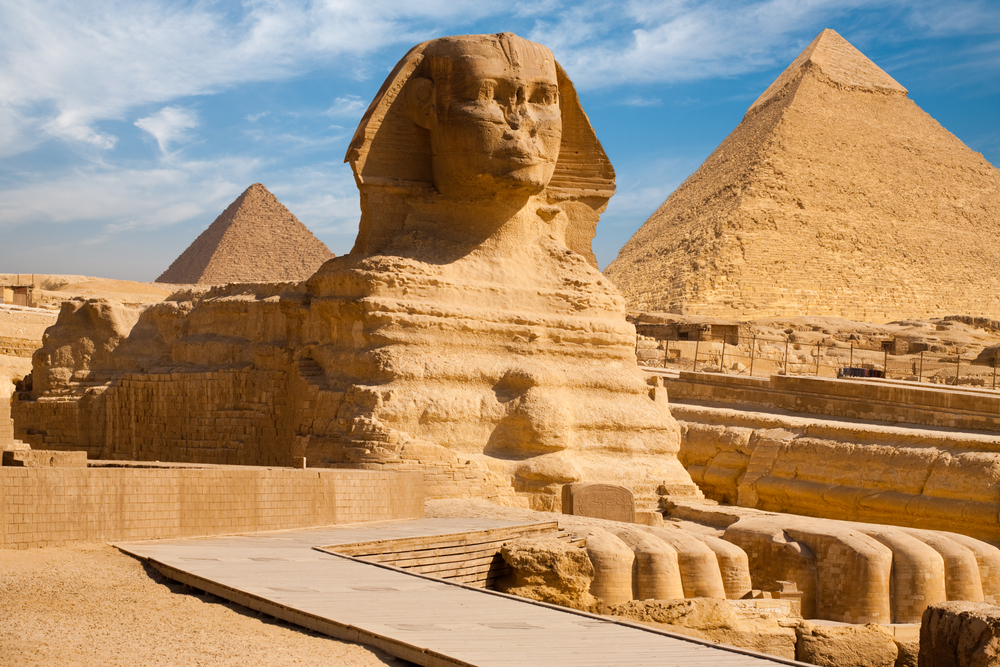The long-standing civilization of Ancient Egypt spans a rich history full of enigma and splendor that lasts over 3 millennia. Its pharaonic rule, monumental structures, and hidden riches continue to enchant us with unsolved riddles and exceptional accomplishments. In our exploration of these ancient wonders, we will delve into the world of the pharaohs, uncover the purposes of the great pyramids, and delve into the enduring heritage that continues to captivate and influence modern society.

The Rulers and Their Divine Mandate:
Central to Ancient Egypt’s structure was the pharaoh, considered a divine sovereign chosen to act as the mediator between the deities and the people. Seen as living gods, the pharaohs held sway across all domains of Egyptian society. Their intricately designed resting places, notably the renowned Valley of the Kings, were constructed to protect their corpses and support their passage into the realm of the afterlife.
The Engineering Wonders of the Pyramids:
These time-defying edifices known as the pyramids serve as a testament to the ancient Egyptians’ incredible structural and technical skills. Erected as grand mausoleums for the pharaohs, these architectural marvels, particularly the Great Pyramid of Giza, mesmerize onlookers with their monumental scale, meticulousness, and puzzling construction methodologies.
The Code of Hieroglyphs: A Script Unearthed:
A pivotal accomplishment of Ancient Egypt was the creation of their unique script, known as hieroglyphs. This intricate arrangement of representational imagery served to document sacred writings, chronicles of their time, and aspects of everyday existence. The breaking of the hieroglyphic code in the 19th century granted us a treasure of knowledge about ancient Egyptian worldviews, ceremonies, and societal customs.
The Imprint of Art and Edifices:
A testament to their reverence for divine rulers and religious beliefs, Ancient Egypt’s art and architectural designs are remarkable. Grand temples, imposing figures, and ornate crypt murals exhibit the craftsmanship of Egyptian artisans. The unvarying nature of their artistic expressions highlights timeless principles and the concept of cosmic order.
The Pillars of Faith and the Hereafter:
Faith was the cornerstone of Ancient Egyptian culture, featuring an elaborate array of divinities. Their faith in life after death compelled them to carry out intricate funerary rites, practice mummification, and erect tombs and crypts as testament to their vision of existence extending beyond mortality.
The Innovations of Science and Technology:
Boasting considerable advancements in various fields, Ancient Egypt was an epitome of scientific and technological innovation. They conceptualized intricate irrigation methods, medicinal practices, and mathematical principles. Their deep-rooted astronomical knowledge allowed them to devise exact calendars and harmoniously arrange their megalithic monuments with celestial occurrences.
The Enduring Heritage:
The lasting influence of Ancient Egypt pervades modern culture, shaping art, architecture, and mythologies in Western society. Ancient Egyptian themes and iconography persist in today’s art and design, and ongoing Egyptological studies provide fresh perspectives on this age-old culture.
As more secrets of Ancient Egypt come to light, we gain access to a world that was undoubtedly ahead of its era. From the splendor of its rulers to the striking nature of the pyramids, its legacy is a permanent inscription in human civilization’s records. As we decode more enigmas of this bygone empire, we foster a heightened respect for their extraordinary contributions, profound wisdom, and sustained cultural impact. We press on in our quest to fathom the magnificence of Ancient Egypt, preserving its memory for future generations to be in awe and learn from.







